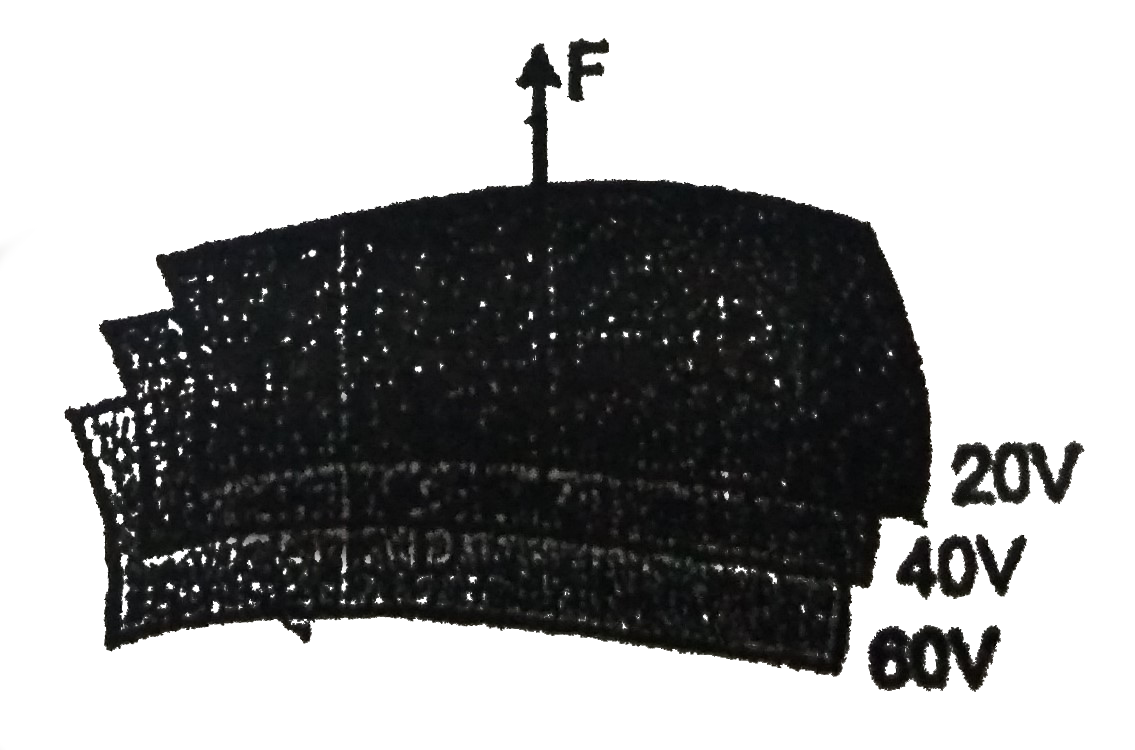Statement I: The curent density →J at any point in
ohmic resistor is in the direction of electric field →E at that point.
Statement II: A point charge when released from rest in a region having only electrostatic field always moves along electric lines of force.
If both Assertion & Reason are True & the Reason is a correct explanation of the Assertion.
If both Assertion & Reason are True but Reason is not a correct explanation of the Assertion.
If Assertion is True but the Reason is False.
If both Assertion & Reason are False.
The correct Answer is:C
From relation →J=σ→E, the current density →J at any point in ohmic resistor is in direction of electric field →E at the point. In space having non-uniform electric field, charges released from rest may not move along ELOF.
Topper's Solved these Questions
- TEST PAPERSBOOK - ALLENCHAPTER - TEST PAPERSEXERCISE - PAPER 3
99 Videos
- TEST PAPERSBOOK - ALLENCHAPTER - TEST PAPERSEXERCISE - Part-1 Physics
15 Videos
- TEST PAPERSBOOK - ALLENCHAPTER - TEST PAPERSEXERCISE - MATHS
14 Videos
- TEST PAPER 4BOOK - ALLENCHAPTER - TEST PAPER 4EXERCISE - PHYSICS
44 Videos
- UNIT & DIMENSIONS, BASIC MATHS AND VECTOR BOOK - ALLENCHAPTER - UNIT & DIMENSIONS, BASIC MATHS AND VECTOR EXERCISE - Exercise (J-A)
7 Videos
Similar Questions
STATEMENT 1: The current density →J at any point in ohmic resistor is in direction of electric field →E at that point .
STATEMENT 2: A point charge when released from rest in a region having only electrostatic field always moves along electric lines of force.
View SolutionSTATEMENT 1: The current density →J at any point in ohmic resistor is in direction of electric field →E at that point .
STATEMENT 2: A point charge when released from rest in a region having only electrostatic field always moves along electric lines of force.
View SolutionA charged particle always move in the direction of electric field. Is this statement true or false?
View SolutionA family of equipotential surface are shown. The direction of the electric field at point A is along-

View SolutionAlong the axis of a dipole, direction of electric field is always in the direction of electric dipole moment p. Is this statement true of false?
View SolutionDraw a plot showing the variation of (i) electric field (E ) and (ii) electric potential (V) with distance r due to a point charge Q.
View SolutionStatement I: If electric potential in certain region is constant, then the electric field must be zero in this region.
Statement II: →E=−dVdrˆv.
View SolutionShow that there can be no net charge in a region in which the electric field is uniform at all points.
View SolutionAssertion A point charge produces a uniform electric field.
Reason Due to a point charge, electric lines of forces are parallel and equidistant.
View SolutionTotal electric force on an electric dipole placed in an electric field of a point charge is :
View Solution
